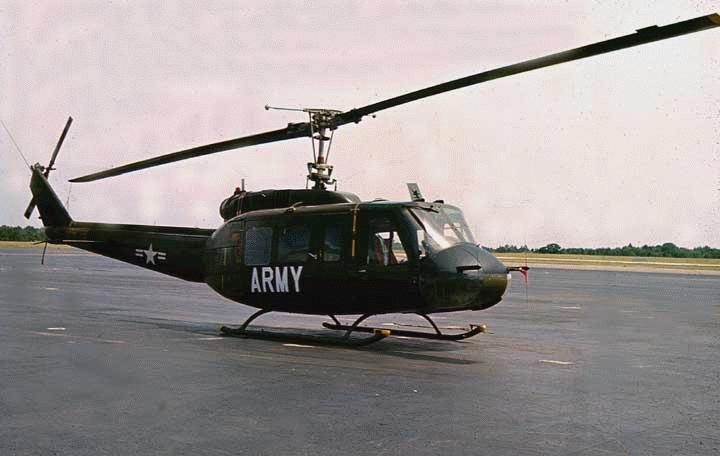Frankie Caryl served with the 506th Infantry Regiment at Fort Campbell, beginning from the early 1960s. At the time, the special Army’s series “The Big Picture” were broadcast on TV and one episode really caught Caryl’s attention. The series depicted the story of the Army in historical and current examples and this particular episode showed a new way of using helicopters, which were equipped with rockets and machine guns. “I had seen these new jet [engine] helicopters. How cool was that? Because prior to that, they were the piston gasoline engines,”said Caryl. Shortly after, he reenlisted just so he can fly one of those toys he really enjoyed watching.
Therefore, from the autumn of 1962 until 1964 in the spring, Caryl was assigned as the crew chief of the UH-1B Iroquois helicopter. For four decades, the UH-1B Iroquois helicopter was exhibited in front of the Building T-39 on Screaming Eagle Boulevard.
The “Huey” was displayed in front of the Building T-39, which has been the 101st Airborne Division headquarters since the Second World War and until 2006, in the early days of the 1970s, just after the return of the 101st Airborne Division from Vietnam.
Caryl did not see Huey again until 1994, 30 years after he retired from the Army. He left his car, went to the podium and peered at the serial number visible inside. Caryl admitted that reuniting with his old pal was tough and emotional. He recalled the day he signed for the aircraft and received that aircraft; the day the aircraft became his and he became the chief of the aircraft.
Frankie Caryl, aged 73, read that on Jan. 17 the Huey was permanently removed for restoration, since it was quite damaged after spending so many years outdoors in changing weather. He served with the 101st Aviation Battalion (Provisional), 101st Abn. Div., and he flew that particular aircraft during his service, The Fort Camp Bell Courier reports.
The crew had been assigned with supplying air ambulance around Fort Campbell. Caryl’s training involved jumping out of Huey three times a day, for three consecutive days. The reason why he did it, was so they can test the same person as he experienced several conditions and jumping at different altitudes.
Caryl said he has great admiration for those guys who flew the Huey in Vietnam. He said the Huey became an icon thanks to its missions in the Vietnam War. “They went to Vietnam and they raised hell with Huey helicopters,” he said.
//

